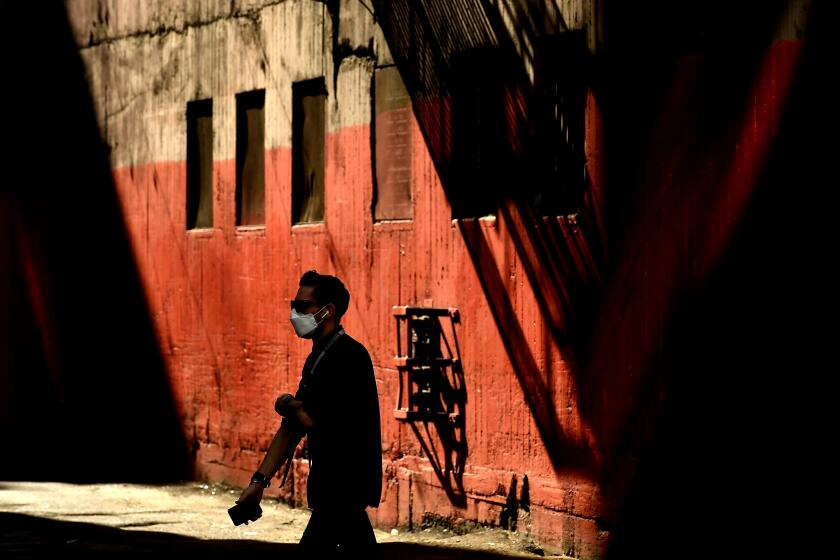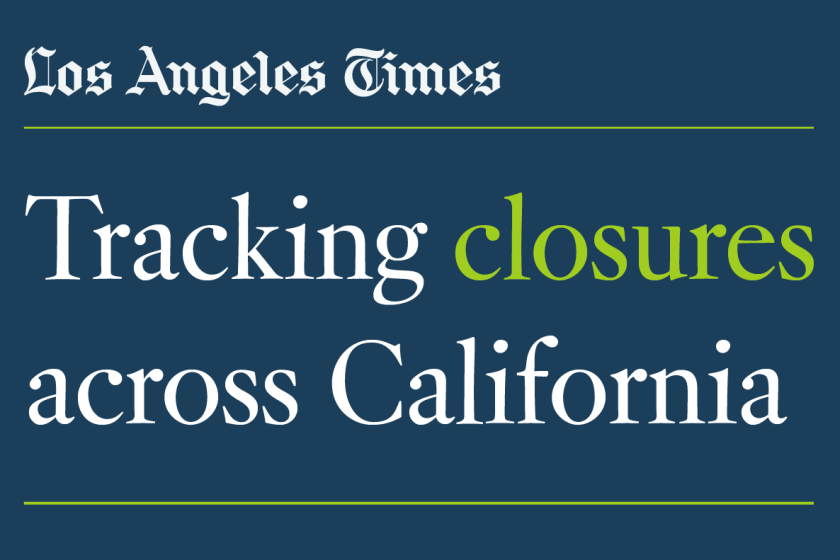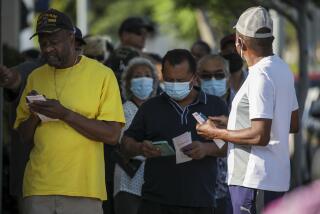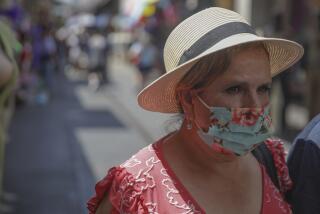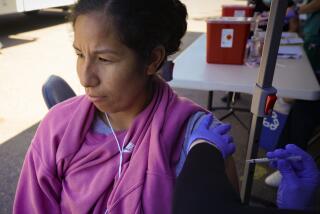Most of California is back in the purple COVID-19 tier. What does that mean again?
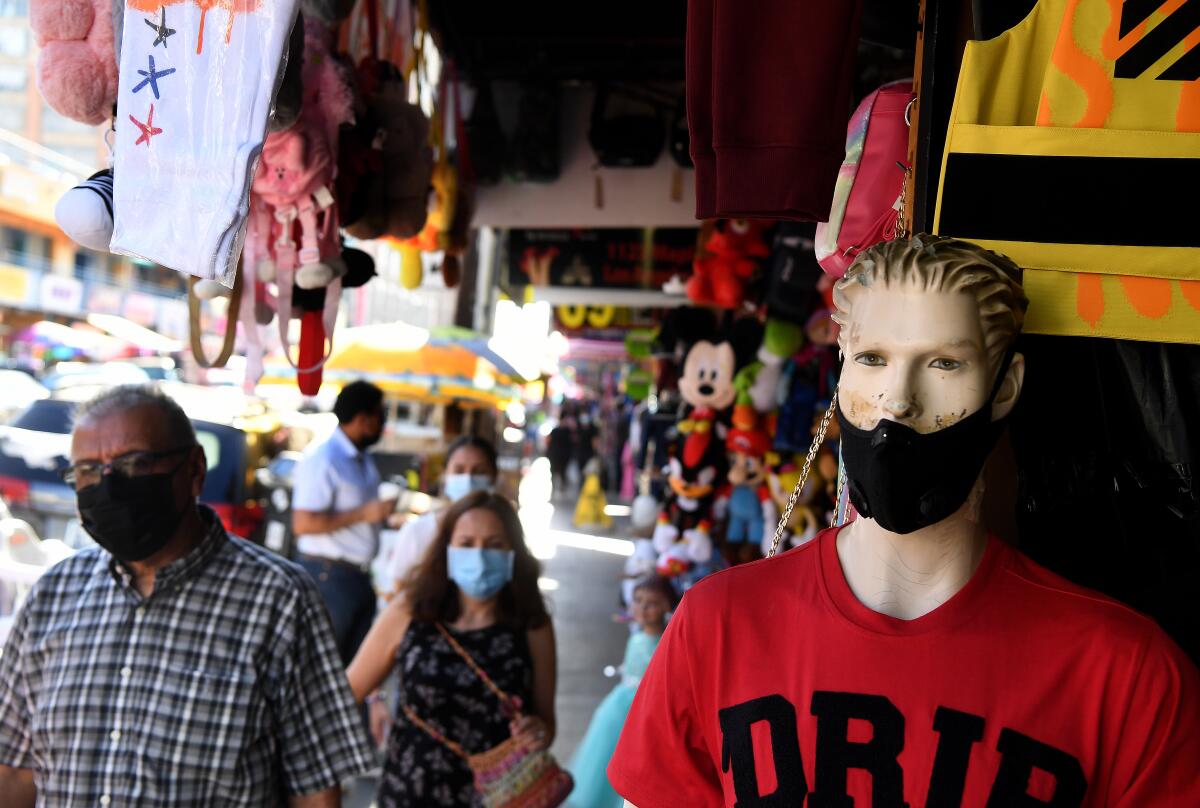
California is turning purple — but not in the political sense.
Following a major spike in coronavirus cases, 41 of the state’s 58 counties — encompassing about 37 million people — will remain in or roll back to the strictest tier of the state’s four-part, color-coded reopening roadmap. That means a large number of businesses will have to suspend or severely limit indoor operations.
The state announcement a rollback in business reopenings amid the steepest rise in coronavirus cases that California has seen.
Officials announced the new restrictions Monday, the same day California reported a record 13,412 new coronavirus cases.
Counties that have newly fallen back into the purple tier include Orange, Ventura, Santa Barbara, Kern and San Luis Obispo. Los Angeles, San Bernardino, Riverside, San Diego and Imperial counties were already in that category.
Most counties in the Bay Area — Santa Clara, Alameda, Contra Costa, Napa and Solano — were also sent back to the purple tier. Sonoma County was already in that category.
Gov. Gavin Newsom launched the state’s four-tier system in late August, replacing an informal structure that allowed local officials to determine their own readiness to reopen.
Officials warned that a new stay-at-home order would be imposed if coronavirus cases and hospitalizations continue to spike over the next few weeks.
The newer system, considered more cautious, bases reopening criteria entirely on data showing the spread of the virus among residents. That includes daily averages of new cases per 100,000 residents and the percentage of positive cases compared with the overall number of coronavirus tests conducted.
Everything in the time of COVID-19 can seem fuzzy — even rules that govern our daily existence — which is why it’s worth revisiting exactly what the state’s tiers mean and how counties can progress to less restrictive ones. And it’s worth noting that counties can impose stricter rules than the state’s standards.
To contain the spread of COVID-19, parks, restaurants and stores are slowly reopening.
- Purple, Tier 1, widespread transmission: Indoor operations of restaurant dining rooms, gyms and houses of worship are shut. Counties in this tier have more than seven new cases per 100,000 people each day and a coronavirus test positivity rate of more than 8%.
For counties in the purple tier, California officials require that the following types of indoor settings be closed to the public: restaurant dining rooms; wineries; gyms; saunas and steam rooms; dance and yoga studios; swimming pools; movie theaters; museums; zoos; aquariums; family entertainment centers like bowling alleys and escape rooms; indoor playgrounds like bounce centers, ball pits and laser tag facilities; offices in nonessential businesses; card rooms; and satellite wagering sites.
Houses of worship cannot hold in-person services indoors. Most retail stores, malls and libraries can open at 25% capacity; grocery stores can open at 50% capacity. At indoor malls, common areas and food courts must be closed.
Closed to the public are amusement parks, bars, breweries, and distilleries — regardless of whether the settings are indoor or outdoor.
Professional sports venues and racetracks can operate but must be closed to in-person audiences.
Wedding ceremonies, funerals and other cultural ceremonies cannot be held indoors. Wedding receptions are banned statewide, regardless of the tier.
Higher-education institutions are closed for indoor lectures and student gatherings, but there are exceptions such as for labs and studio arts.
Elementary schools may be given special permission to be open if they have been granted waivers, and schools that have already reopened because the county was in a less restrictive tier are not required under state rules to close.
- Red, Tier 2, substantial transmission: Indoor restaurant dining rooms, gyms and houses of worship can open at limited capacity. Counties in this tier have four to seven cases per 100,000 people each day and a coronavirus test positivity rate of between 5% and 8%.
For counties in the red tier, indoor restaurant dining rooms, movie theaters and houses of worship can reopen at 25% capacity or up to 100 people, whichever is fewer. Gyms and dance and yoga studios can open at 10% capacity. Museums, zoos and aquariums can open indoor activities at 25% capacity.
Stores, indoor malls and libraries can open at 50% capacity. Indoor malls must keep common areas closed and reduce capacity at food courts.
Wedding ceremonies, funerals and other cultural ceremonies can be held indoors at 25% capacity or 100 people, whichever is fewer. Wedding receptions are banned.
Higher-education institutions can allow for indoor lectures and student gatherings but are limited to 25% capacity or 100 people, whichever is fewer; however, student activities should be held virtually when possible.
Primary and secondary schools are allowed to fully reopen for in-person instruction, at the discretion of local school officials.
Gov. Gavin Newsom has announced a stay-at-home order affecting most of California.
- Orange, Tier 3, moderate transmission: Bars can open outdoors; fans can return to outdoor professional sports venues at a limited capacity. Counties in this tier have 1 to 3.9 new cases per 100,000 people each day and a coronavirus test positivity rate of 2% to 4.9%.
Indoor restaurant dining rooms, movie theaters and houses of worship can open at 50% capacity or 200 people, whichever is fewer; wineries can operate indoors at 25% capacity or 100 people, whichever is fewer. Bars, breweries and distilleries that don’t serve meals can open outdoors.
Gyms and dance and yoga studios can open at 25% capacity; indoor swimming pools can open. Museums, zoos and aquariums can open indoor activities at 50% capacity.
Family entertainment centers like bowling alleys and escape rooms, and indoor playgrounds like bounce centers, ball pits and laser tag facilities, can reopen indoors at 25% capacity. Offices in nonessential industries can reopen, but workers should be encouraged to work remotely. Card rooms and satellite wagering sites can reopen indoors at 25% capacity.
Wedding ceremonies, funerals and other cultural ceremonies can be held indoors at 50% capacity or 200 people, whichever is fewer. Wedding receptions are banned.
Retail and grocery stores and libraries can operate at full capacity. Indoor malls’ common areas remain closed, and food courts must operate at a reduced capacity.
Higher-education institutions can allow indoor lectures and student gatherings at 50% capacity or 200 people, whichever is fewer. Labs and studio arts can open at regular capacity; however, student activities should be done remotely when possible.
Small amusement parks can reopen outdoor attractions to in-county visitors at 25% capacity or 500 people, whichever is fewer, and must require reservations or advance tickets. (Small parks are defined as those with a total capacity of fewer than 15,000.)
Outdoor professional sports venues and racetracks can open at 20% capacity; fans must live within 120 miles of the venue and are required to have reservations and assigned seating; concessions are in-seat only.
- Yellow, minimal transmission: Large theme parks can reopen at limited capacity, as can indoor operations of bars. Counties in this tier have fewer than one new case per 100,000 people daily and a coronavirus test positivity rate of less than 2%.
Indoor restaurant dining rooms, movie theaters, houses of worship, gyms, fitness centers, saunas, spas, steam rooms, dance and yoga studios, card rooms and satellite wagering sites can open at 50% capacity. Wineries can open indoors at 50% capacity or 200 people, whichever is fewer.
Indoor family entertainment centers, including arcades, ice skating rinks and playgrounds, can reopen at 50% capacity.
Indoor malls’ common areas can reopen, but food courts must operate at a reduced capacity. Museums, zoos and aquariums can open indoors at full capacity but must follow modifications.
Bars, breweries and distilleries that don’t serve meals can reopen indoors at 50% capacity.
Outdoor professional sports venues and racetracks can open at 25% capacity; fans must live within 120 miles of the venue and are required to have reservations and assigned seating; concessions are in-seat only.
Wedding ceremonies, funerals and other cultural ceremonies can be held indoors at 50% capacity. Wedding receptions are banned.
Higher-education institutions can allow for indoor lectures and student gatherings at 50% capacity. Labs and studio arts can open at regular capacity; however, student activities should be done remotely when possible.
Large amusement and theme parks can open at 25% capacity and must require reservations or advance tickets.
Statewide restrictions
Some venues are shut statewide for all tiers: concert venues, live theater, convention centers, festivals and nightclubs.
The state allows the following settings to remain open in all counties, regardless of the tier, with modifications to protect against the pandemic: body waxing studios, child care, day camps, doctors and dentists, electrologists, estheticians, farmer’s markets, film and TV productions, hair salons, barbershops, laundromats, massage therapy studios, music productions, nail salons, outdoor playgrounds, pet grooming, piercing shops, skateparks, skin-care services, outdoor swimming pools and tattoo parlors.
Large gatherings are generally prohibited statewide, with some exceptions, such as outdoor religious gatherings and protests, as long as attendees are wearing masks and can maintain distance of at least six feet from members of other households.
Singing, shouting, chanting, cheering or exercising are strongly discouraged.
In the purple tier, small gatherings are allowed outdoors but require masks and physical distancing, attendance by members of no more than three households and a time limit of two hours.
The same types of gatherings may occur indoors in the less-restrictive tiers but are strongly discouraged.
“If gathering indoors, increase fresh air circulation by opening windows or doors, as much as possible, especially in the rooms where people are gathering,” state officials say.
Although California has been updating its tier assignments weekly on Tuesdays, Gov. Gavin Newsom said those determinations will now be made and announced closer to real time.
Counties previously changed tiers only if their metrics fell in the determined range for two straight weeks; now, those decisions can be made based on one week’s worth of data, officials said.
In addition to the 41 counties that moved into the purple tier this week, 11 were placed in the second-most-restrictive, or red, category: Del Norte, Modoc, Humboldt, Plumas, Colusa, Lake, Marin, San Francisco, San Mateo, Amador and Mono.
Four are in the third tier, orange — Lassen, Sierra, Calaveras and Inyo — and only two, Alpine and Mariposa, remain in the least-restrictive, yellow, tier.
More to Read
Sign up for Essential California
The most important California stories and recommendations in your inbox every morning.
You may occasionally receive promotional content from the Los Angeles Times.

